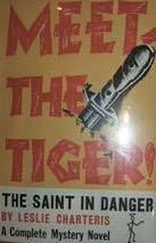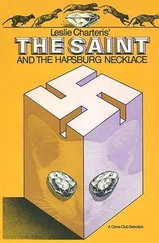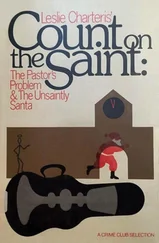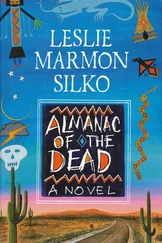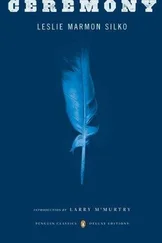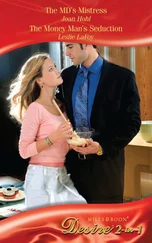But indoors in his studio there were floodlights so bright we girls could barely open our eyes without being blinded. We’d complain but he’d say “oh just a few more” and he wouldn’t be deterred, he’d get completely lost in the process of working with the light. My father knew how he wanted the light and what he wanted to see through the lens. It wasn’t too bad if we were dressed in our play clothes but sometimes for Christmas or Easter my mother sewed us beautiful dresses that took her weeks to make. We posed in our new dresses and shoes but they were stiff, the fabric chafed and the lights seemed even hotter then.
By the ways he dressed us and posed us for the annual Christmas card, you can see my father was intrigued by the 1950s style of black and white photography used in fashion and advertising, as well as the images featured in Modern Photography and other photography magazines he bought.
One time he had my mother dress us as gangsters in fedoras and trench coats much too big for us and he posed us around his circular poker table that had a pile of chips and cards. There were beer bottles on the table and my sister Gigi held a real cigar. I was about eight, my sister Wendy was six and Gigi was four years old. One year he managed to superimpose our images onto Christmas tree ornaments, and one of the older folks who saw the Christmas card was amazed by the image and asked my dad, “Wasn’t it difficult to get the girls in there without them getting all scratched up?”
The best Christmas card was the one my father made from the portrait of my two sisters and me dressed in our “Indian clothes” at the old water hole near the original tribal council building. Our cousins Esther Johnson and Rachel Anaya at Paguate loaned us the mantas and my mother sewed us the gingham underdress the Laguna women wore with the mantas. As they helped us get dressed Esther and Rachel explained each article of clothing and how it was to be worn; they wrapped the sashes around us and the white buckskin leggings around our legs. In the old days the women helped dress one another every day; they were always in the company of other women so they thought nothing of it. They loaned us all the silver and turquoise bracelets and rings and necklaces. To be so carefully dressed in the old-time way was very special for the three of us.
The dressing and posing happened on Sunday afternoons or in the early evening because my father worked at my grandpa Hank’s store six and a half days a week. But almost every night after supper, my father also worked in the darkroom from eight to eleven, sometimes later. My mother worked on her sewing in the front room.
I often sat in the darkroom watching my father make prints until bedtime at nine. I remember his delight in showing me the exposed paper in the red safe light, apparently blank paper until he slid it into the first tray of chemicals in the long shallow sink. He’d tell me to watch, and at first I couldn’t see anything; again he’d tell me “Look! See!” He was as excited as I was as the images began to appear.
During the day when my father made grocery deliveries to homes in the village or when he went to the depot to pick up packages for the store, he always took a camera along. He once told me a true photographer is never without a camera. Sometimes he’d be asked to take a photograph of kids or an elder and right on the spot he did it because he always had cameras with him. He was very disciplined about his cameras. We kids had to ride in the back seat with all the bags of camera equipment. In this way even as children we saw how absolutely serious my father was about photography.
My mother was the more dependable and practical of my parents, even if she kept her coffee cup full of whiskey all morning. She graduated from the University of New Mexico and always made more money than my father; she taught at Grants High School for some years before my youngest sister, Gigi, was born. Later she was appointed postmaster at Laguna in the middle 1950s. The post office was located in a corner of my grandpa Hank’s small general merchandise store across the road from our house. My mother paid the bills, and my father spent the money she earned on cameras and darkroom equipment and supplies; so there were tensions in the house over money. My grandfather paid my father in groceries and a little cash each month, with generous time-off to go take photographs nearly any time my father needed.
From the time we could walk she taught my sisters and me not to fear or harm snakes. Her respect for snakes was part of her strength. My mother was the one who taught me to appreciate all snakes, even rattlesnakes; she married my father who was a snake-killer, but she stubbornly persisted in her appreciation of snakes. She handled live snakes but the sight of a mouse sent my mother up on the table in hysteria. No wonder snakes were her friends.
She had learned the mouse phobia from her grandma Goddard the old Cherokee who kept a black snake in the cellar to protect them from mice that Grandma Goddard believed would run up their skirts and attack them. My mother and her brother spent summers in Kansas with Grandma Goddard. Grandma’s father, Grandpa Wood, was born on one of the forced marches of the Cherokee Removal or the Trail of Tears, somewhere in Kentucky.
My mother owned a.257 Roberts deer rifle with a scope. If she had not hunted deer with my father and the others, I would not have been able to go along as I did when I was six. One year she shot a doe, but seemed to enjoy the hiking more than the shooting. She taught home economics and loved to cook and sew for us when she had time which was seldom because often after a day of teaching she had to help out at the store.
When I was in the third grade her aunt died and left her a piano. We girls loved to listen and watch her when she played, and I saw sadness in her eyes even when she played pop songs from World War Two. The Albuquerque airport had a good restaurant when I was a child and occasionally my parents took us girls along. One evening after dinner as we left the restaurant, boarding for a flight was called and inexplicably my mother became very emotional and choked back tears. I once saw her do that at a train station years later when I was in college.
My sister Wendy loved my mother a great deal and as a little child, Wendy tried to comfort her. Wendy stayed in the house with my mother and made the house her realm too, so my mother wasn’t alone. As we got older, Wendy stayed home with her while Gigi and I went hiking with my father on Sunday afternoons.
My sisters and I felt very protective of our mother because we sensed she was troubled. My mother didn’t scold us or whip us like my father did. She was afraid of him too just as we were when he was angry, although he never touched her. She always helped us with our homework and encouraged us at whatever we wanted to try. She was the one who said I should have a horse when I was eight years old. She helped me with the colt because my father was afraid of horses. The colt knew my father was afraid and kicked him the first day.
My mother loved to dance and have a good time. She loved to repeat jokes she heard. She was the life of the party. She was devoted to our dogs and cats, and once had a canary she loved. She was also very attached to her goldfish and liked her tarantula so much she set it free. I come by my love for creatures wild and tame from my mother.
I come by my knack for writing from my mother too. I only learned this in 2001 after she died. In one of her old albums I found a clipping from the Great Falls, Montana newspaper that announced that Mary Virginia Leslie, a sophomore at Stockett High School, had won first prize in the Montana State high school essay contest sponsored by the Montana Electric Power Company. The clipping makes no mention of the essay’s topic, and my mother never talked about it.
Читать дальше

